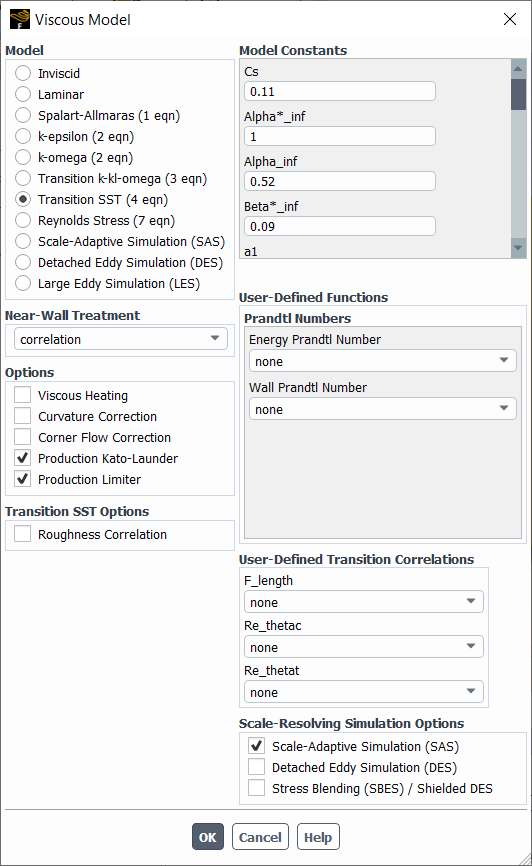Scale-Adaptive Simulation (SAS) modeling is an approach for the simulation of unsteady
turbulent flows, and can be applied in combination with most -based URANS turbulence models. To apply it in combination with the SST
-
turbulence model, you can simply select Scale-Adaptive
Simulation (SAS) from the Model list in the
Viscous Model dialog box.
You can also apply SAS in combination with the following -based URANS models: the Standard
-
model, the BSL
-
model, the Generalized k-w (GEKO) model, the Transition SST model,
the Explicit Algebraic Reynolds Stress (WJ-BSL-EARSM) model, and the
-based Reynolds stress models (RSM). Simply select the appropriate
Model and then enable the Scale-Adaptive Simulation
(SAS) option in the Scale-Resolving Simulation
Options group box. For an example, see Figure 15.21: Scale-Adaptive Simulation (SAS) in Combination with the Transition SST
Model.
Note that for SAS modeling, the Bounded Central Differencing scheme (available in the Solution Methods task page) is recommended for momentum discretization, and is the default setting.
Furthermore, the -insensitive wall treatment of the underlying turbulence model is used.
For details on the available options, see y+-Insensitive Near-Wall Treatment for ω-based Turbulence Models in the Fluent Theory Guide.




